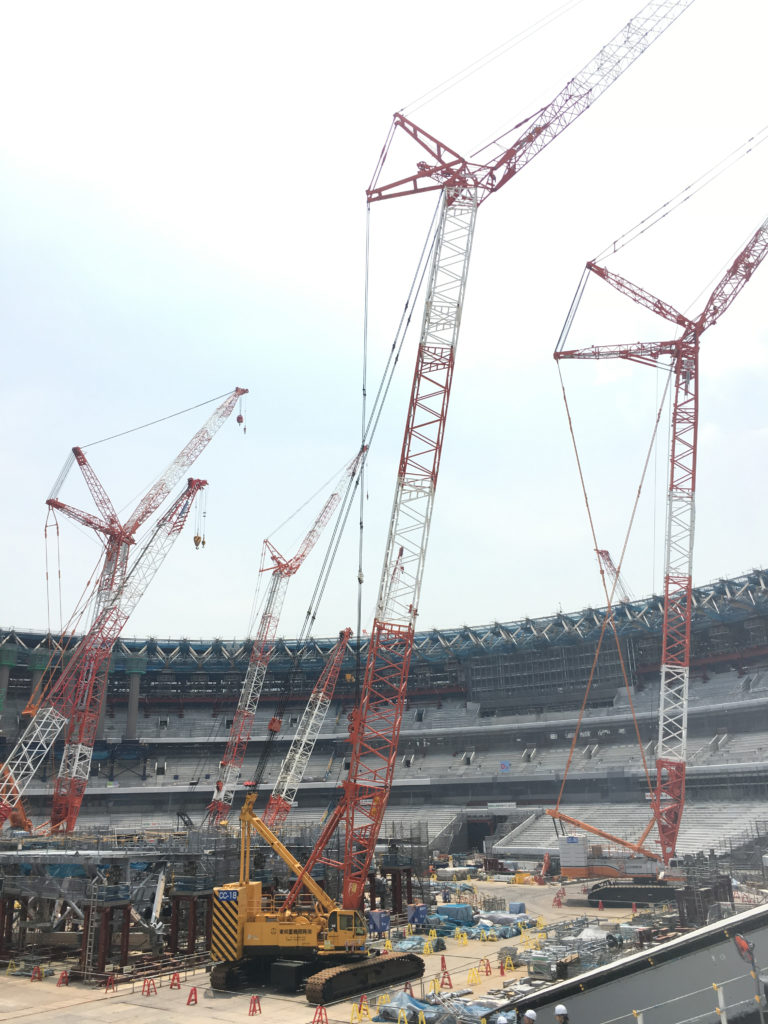Just a year after the 2014 World Cup in Brazil, many of the stadiums built for the tournament had settled into disuse. Brasilia’s Estádio Nacional, for example, became a $550 million bus parking lot. This landscape of empty monuments, compounded by massive national debt, was not an aberration. Many blame the 2004 Athens Olympics for contributing heavily to Greece’s spiraling economic crisis, and other cities and nations that have hosted global, large-scale events have experienced similar challenges. But such outcomes are not foregone conclusions, according to Kaz Yoneda, the founding principal of Tokyo-based firm Bureau 0-1 and a 2018 Richard Rogers Fellow.
Yoneda used his three-month fellowship to analyze the London 2012 Olympics in order to improve preparations for Tokyo 2020, and to consider the futures of cities more broadly. His particular concern was legacy planning—the concept that buildings can solve present needs but should also be constructed with an awareness of, and hope for reappropriation by, future generations. “These types of events always expose the issues inherent to any host city,” he says. “A two-week event is not a city’s apotheosis. Cities don’t change in that time. What’s important is what happens 10, 20, and 30 years later. That architecture and urban spaces are able to adapt and take on changing cultural values is a beautiful thing.”

London serves as a prime counterexample to Brazil and Greece, as Yoneda learned when he visited the former venues and interviewed designers and architects involved in the games. “A huge legacy master plan existed years prior to the Olympics to develop the eastern track of the city that had been devastated by Nazi air raids and which subsequently became an industrial area with low-income housing,” Yoneda explains. “The goal wasn’t so much to build grandiose venues or develop luxury condos but to increase the average lifespan of East Londoners. And in order to do that, you need better hospitals, better living environments, better green spaces, and better education.”
A two-week event is not a city’s apotheosis. Cities don’t change in that time. What’s important is what happens 10, 20, and 30 years later. That architecture and urban spaces are able to adapt and take on changing cultural values is a beautiful thing.
on planning Olympic facilities with long-term development goals in place
Tokyo does not have any such framework or vision in place—an absence that is a primary consideration of the international think tank xLab. Co-founded by Hitoshi Abe at UCLA and Kengo Kuma and Atsushi Deguchi at the University of Tokyo, the group focuses on imagining future environments with an emphasis on melding physical and digital spaces through interdisciplinary engagement.
During xLab’s recently concluded three-year summer program, Yoneda led courses concentrated on a set of core themes: community (2017), mobility (2018), and resilience (2019). This year, he and Miho Mazereeuw developed a syllabus around Harumi Flag, an athletes’ village under construction in the Bay of Tokyo. Of major concern is the site’s future stability. “Because it’s a landfill, it has a very weak foundation,” Yoneda explains. “It’s prone to soil liquefaction. The question is, When it’s eventually turned into a mixed-use high-end residential complex, how resilient will it be if an earthquake occurs and a tsunami hits the area?”

Yoneda believes that one way to mitigate the legacy of poor planning is to involve the local community. “We took a ground-up, incremental, small-scale approach to the idea of resilience because people are creative and strategic about how they can use their surroundings,” he says. “Citizens living in an area can become stakeholders who practice disaster prevention while living their everyday lives. It makes prevention second nature because you’ve trained subconsciously in your everyday learning.”
Future Olympic hosts may be better prepared. In 2018, the International Olympic Committee approved “Agenda 2020, the New Norm,” a manifesto featuring 118 reforms that could diminish the emphasis placed on iconic, individual buildings and shift attention to long-term development goals. “I wish that it had already been in place when Tokyo was chosen because that might have forced the organization and the city to push for a legacy plan,” Yoneda says.
He remains hopeful about the future, however, because he sees alternative solutions to governmental interventions. “Tokyo is very complex with a lot of players, and anything you do here requires collaboration and an interdisciplinary team,” he explains. “It will change at a grassroots and private-sector level, through coalitions of the willing—real-estate developers, architects, designers, producers, media outlets—who are interested in the long term.”